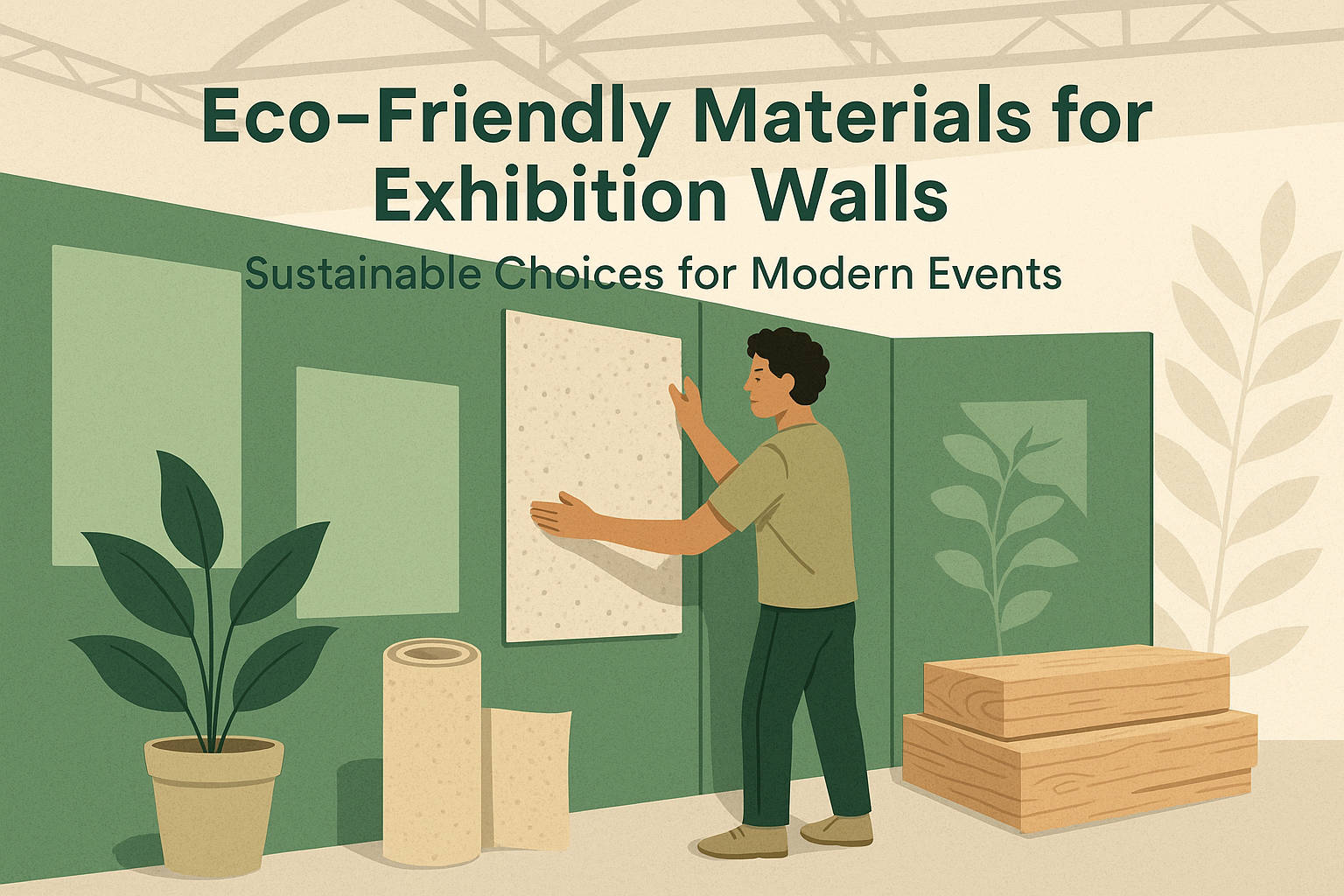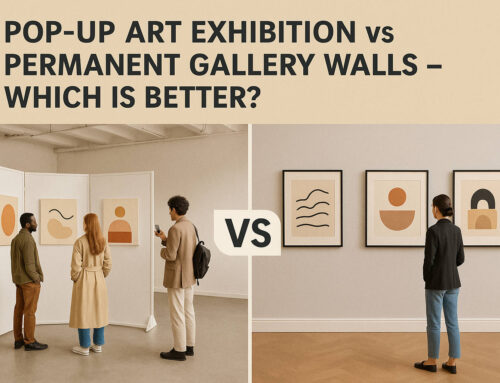♻️ Why Sustainability Matters in Exhibition Design
Sustainability is no longer a niche concept — it’s becoming the standard expectation across the events and exhibitions industry.
Brands, artists, and organisers are under pressure to reduce waste, reuse materials, and lower their carbon footprint.
Traditional exhibition builds often rely on single-use MDF, vinyl graphics, and synthetic paints — which are difficult to recycle and environmentally harmful.
That’s why more exhibitors are switching to eco-friendly materials for exhibition walls — options that look professional, last longer, and leave a smaller impact on the planet.
Let’s explore the best sustainable materials and design strategies for greener exhibitions.
🪵 1️⃣ FSC-Certified Timber & Plywood
Keyword focus: sustainable wood exhibition walls
Using FSC (Forest Stewardship Council) certified wood ensures your timber panels come from responsibly managed forests.
Plywood and timber frames can be reused for multiple events and easily repaired if damaged.
Advantages:
-
Durable and visually warm
-
Easy to paint or re-skin
-
Fully recyclable or biodegradable
💡 Tip: Avoid MDF (Medium Density Fibreboard) unless it’s formaldehyde-free — standard MDF releases VOCs and is hard to recycle.
🧱 2️⃣ Recycled Aluminium Frameworks
Keyword focus: modular aluminium exhibition stands
Aluminium is one of the most sustainable building materials in exhibition design. It’s lightweight, strong, and 100% recyclable without quality loss.
Many modular wall systems use aluminium frames that last for years and can be endlessly reconfigured.
Advantages:
-
Long lifespan (10+ years)
-
Minimal transport weight = lower emissions
-
Compatible with fabric or panel inserts
♻️ Sustainability stat: Aluminium recycling uses 95% less energy than producing new metal.
🌿 3️⃣ Recycled & Recyclable Wall Panels
Keyword focus: recycled exhibition panels
Modern panel manufacturers now produce recycled plastic and composite panels that look as sleek as new ones.
Some are made from post-consumer waste like bottles or packaging — and can be recycled again after use.
Popular options:
-
Recycled PET plastic panels
-
Eco-board (made from compressed cardboard fibre)
-
Honeycomb cardboard walls for temporary displays
⚙️ Use case: Lightweight cardboard honeycomb walls are ideal for short-term art exhibitions or travelling pop-ups.
🧵 4️⃣ Organic & Recycled Fabrics
Keyword focus: fabric exhibition walls sustainable
Fabric-based wall systems are popular for both art and trade exhibitions. Using organic cotton, hemp, or recycled polyester (rPET) makes them a greener choice.
These fabrics can be printed with eco inks (water-based, low VOC) and reused multiple times.
Advantages:
-
Lightweight and compact for transport
-
Customisable with digital printing
-
Can be washed or re-dyed for reuse
🌱 Pro Tip: Avoid PVC banner material — it’s difficult to recycle and often ends up in landfill.
🧩 5️⃣ Natural Finishes & Paint Alternatives
Keyword focus: eco-friendly exhibition wall finishes
Low-VOC paints, clay plasters, and plant-based coatings give your exhibition walls a beautiful natural look while improving indoor air quality.
Examples:
-
Limewash paint for soft, textured finishes
-
Clay-based plaster for natural humidity control
-
Plant oil varnishes for wooden panels
💨 Health bonus: Using low-VOC finishes keeps the air cleaner for staff and visitors.
🌍 6️⃣ Reuse, Rent, and Reconfigure Systems
Keyword focus: reusable exhibition stand materials
The greenest material choice is the one that’s used more than once. Renting or reusing modular exhibition walls reduces waste dramatically.
Advantages:
-
Lower cost per use
-
Less waste to landfill
-
Easy to store and transport
🔁 Pro Tip: Ask your exhibition contractor about returnable systems — where panels and frames are reused across multiple clients.
🪴 7️⃣ Eco-Conscious Add-Ons & Accessories
A sustainable wall system can be enhanced with eco-friendly details like:
-
LED lighting (up to 80% more efficient than halogen)
-
Recycled carpet tiles or bamboo flooring
-
Water-based adhesives and low-VOC sealants
-
Reusable signage graphics printed on fabric instead of PVC
💡 Visual Tip: Natural textures like woodgrain and matte finishes give eco-friendly stands a modern, minimalist look that audiences love.
✅ Summary: The Future of Sustainable Exhibition Walls
Eco-friendly exhibition walls are more than a trend — they’re a responsible and cost-effective choice for brands and artists who want to make a lasting impression without leaving a lasting footprint.
MaterialReusabilityRecyclabilityIdeal UseFSC TimberHighHighLong-term exhibitions, art galleriesRecycled AluminiumVery HighVery HighModular wall systemsRecycled PanelsMediumMediumPop-ups, short-term showsOrganic FabricsHighMediumPrinted backdropsNatural FinishesMediumHighWall coatings & visual branding
🏁 Final Thoughts
Designing with sustainability in mind doesn’t mean compromising on creativity.
By choosing eco-friendly materials for exhibition walls, you can:
-
Reduce your environmental impact
-
Save money over time
-
Attract eco-conscious clients and audiences
At [Your Company Name], we design and build sustainable exhibition stands, art walls, and shop-style displaysacross the UK.
Our modular systems are built to last — and built with the planet in mind.
👉 Contact us today to learn more about our eco-friendly exhibition wall options.





